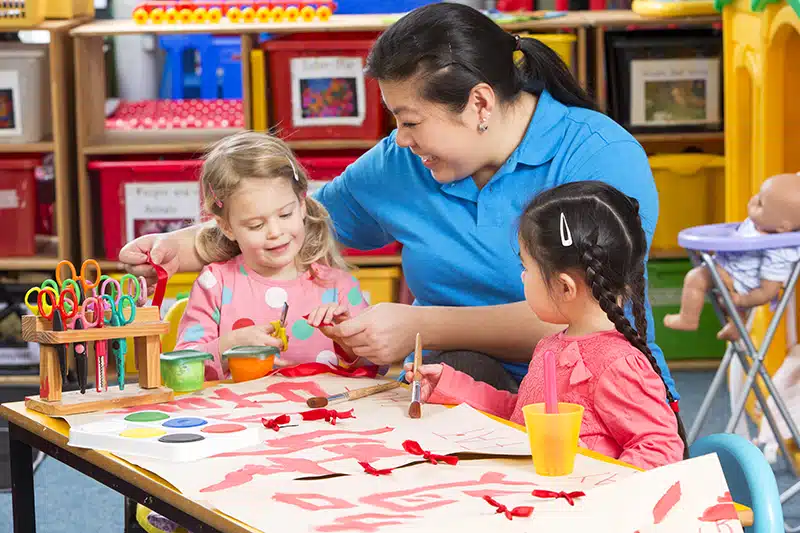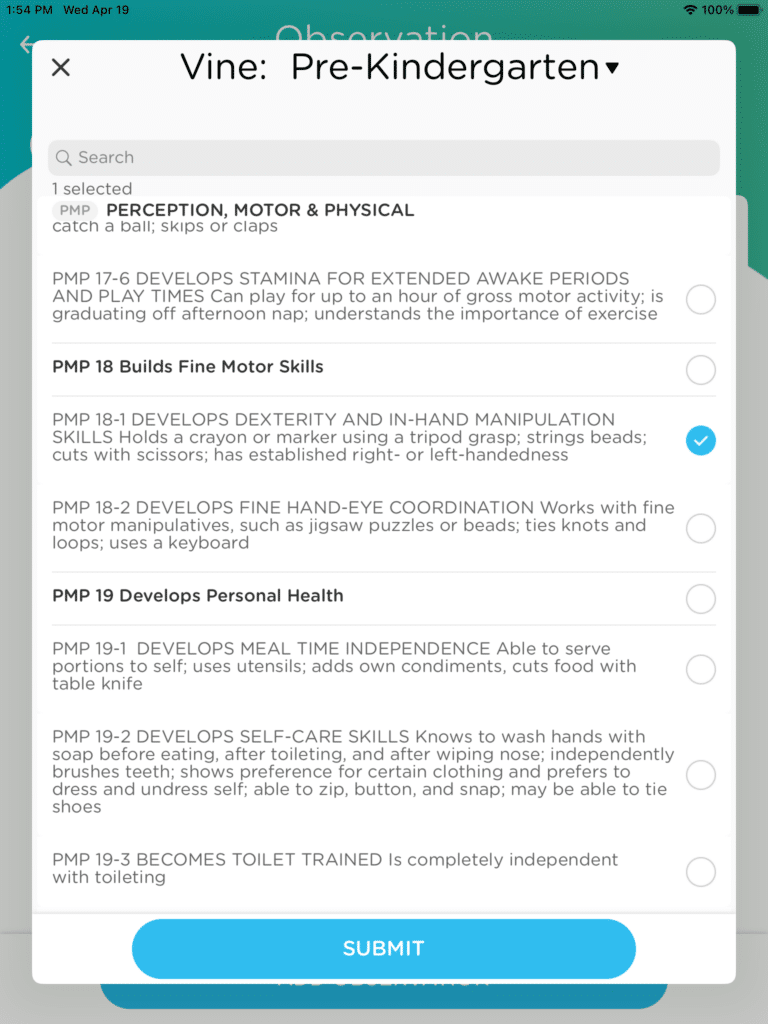
Emergent curriculum is a philosophy of learning that is often associated with early childhood education. It’s based on the premise that children “are most successful at learning when curriculum experiences account for their interests, strengths, needs and lived realities,” according to the University of Toronto.
Let’s dig into this curriculum and style of learning and answer five questions about how it could fit into your child care center!
1. What Is Emergent Curriculum?
Emergent curriculum focuses on the interests, needs and experiences of individual students. Rather than following a predetermined curriculum, emergent curriculum allows learning to emerge naturally based on the students’ interests and inquiries. It emphasizes the importance of active engagement, exploration and hands-on experiences.
In an emergent curriculum, teachers act as facilitators and observers, paying close attention to the interests and developmental needs of the students. They encourage and support students’ inquiries and provide resources and opportunities for further exploration. The curriculum is flexible and responsive, allowing for spontaneous and meaningful learning experiences.
2. Is Emergent Curriculum Appropriate for Early Childhood Education?

This style of learning can be greatly beneficial to young learners.
Emergent curriculum provides flexibility and autonomy to students, but it is important to balance their interests with essential skills and knowledge required for their development. Skilled teachers scaffold learning experiences and ensure that foundational concepts and skills are incorporated into the emergent curriculum.
3. What is an Example of Emergent Curriculum in ECE?
Let’s look at this example from a National Association for the Education of Young Children article titled “Emergent Curriculum in Relationship-Driven Learning Environments”
In this example, preschool teachers notice in early autumn that the children are taking an interest in spider webs on the playground. Several 4-year-olds discover the strands reflecting the sunlight on a fence post. The teachers know the finding has sparked the children’s curiosity when the children ask to photograph the web.
According to the article, this is how classroom teacher Keri Woolsey described her response:
We try to integrate the writing and prewriting skills with the children, so I told the children, “Oh my gosh, I don’t have my camera; could you draw it for me?” They ran inside the classroom and got clipboards, paper, and markers and hurried back to the playground. And then they began to draw. Some of these kids typically don’t really want to try to write or draw, just because they are not confident with those skills. Yet here they are jumping at the task because it was meaningful to them. No matter what the drawing looked like, it was a total celebration of what they were learning.
4. What Are the Key Features of Emergent Curriculum?

Keep these things in mind as you think about how to use emergent curriculum in your ECE and preschool classrooms:
- Child-Centered Approach: The curriculum is driven by the interests, ideas, and questions of the students. Teachers actively listen and observe to identify and support their individual needs and passions.
- Flexibility and Responsiveness: The curriculum is flexible and adapts to the changing interests and developmental stages of the students. It allows for spontaneous learning opportunities and capitalizes on teachable moments.
- Inquiry-Based Learning: Students are encouraged to ask questions, investigate, and explore topics of interest. Teachers guide them in finding answers, conducting research and engaging in hands-on activities.
- Collaboration and Social Interaction: Emergent curriculum often involves group activities and collaborative projects. Students learn from and with each other, building social skills and fostering a sense of community.
- Documentation and Reflection: Teachers document the learning process and outcomes, including student work, observations, and reflections. This documentation helps in assessing progress, sharing insights with parents and informing future planning.
5. How Can My Child Care Center Implement an Emergent Curriculum?
As you look at the features listed above, think about which of your teachers would be most likely to be on board with this method. Share classroom activities using this style with parents!
Just remember that emergent curriculum promotes active engagement, student agency and a love for learning by capitalizing on students’ natural curiosity and interests.
One book that is popular with educators on the subject is “Emergent Curriculum in the Primary Classroom: Interpreting the Reggio Emilia Approach in Schools (Early Childhood Education Series)” by Carol Ann Wein. You can glean more tips and ideas within its pages.
How Procare Can Help!
No matter what curriculum you use, it’s vital that you track a child’s developmental growth, which benefits your center and the children you serve.
Procare Solutions is the only provider of child care management software to offer integrated early learning curriculum and proprietary early childhood assessments for children from birth to 5 years old.
Procare Early Learning powered by Learning Beyond Paper is a fully integrated, 100% digital curriculum offering for infant to pre-kindergarten age groups. It includes 52 weeks of lesson plans for five age groups – infant, young toddler, older toddler, preschool and pre-kindergarten.
Vine Assessments is an integrated framework (available to customers at no additional cost!) that gives early childhood educators a way to clearly articulate the growth and development of children in their care. Its assessments align with standards in all 50 states. Teachers using Procare can tie their lessons and observations directly to the appropriate Vine Assessments indicator from the web-based software and Procare child care mobile app.
Download “Why Assessments Matter in Early Education,” a free eBook that will answer more of your questions and get you ready to include assessments in your child care program!



